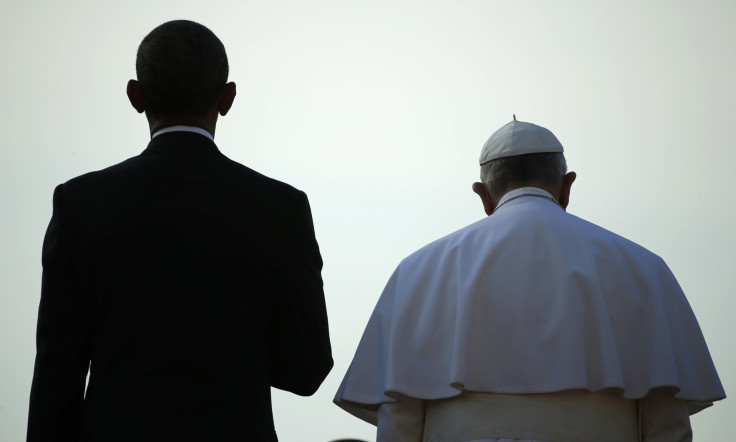How The Secret Service Is Protecting Pope Francis: Snipers, Undercover Agents And Facial Recognition

Pope Francis might be the most popular pontiff in a generation, but that doesn't mean he's easy to protect.
It’s a lesson the U.S. Secret Service and other law enforcement organizations had to learn quickly as they prepared for Francis’ visit to the United States this week. Joseph Clancy, director of the Secret Service, told reporters he traveled to Italy in June to get a feel for the best way to protect the leader of the Catholic Church, and the New York Police Department has been conducting highly publicized drills on how to respond to a terrorist attack or sudden power failure.
But if all goes according to plan, the millions of Americans who gather to see Pope Francis will never know how many security measures are in place to protect him.
“Facial recognition software will definitely be being used in any area where the Pope will be,” Ronald Kessler, the author of “The First Family Detail" and “In the President’s Secret Service,” told the International Business Times. “They’ll remove mailboxes that could have explosives along parade routes, seal manhole covers, protect the underside of the popemobile and stake out evacuation areas.”
That’s not to mention the snipers located on rooftops throughout Washington, D.C., New York and Philadelphia during each of the Pope’s stops. There will almost certainly be “over a hundred” undercover Secret Service agents and police officers “looking for suspicious activity: either people who just look nervous or aren’t smiling when everyone else is smiling,” Kessler said.
By the time the Pope gets back to his hotel, he’ll almost certainly be the only guest staying on that floor, as well as the floors above and below him. It’s the same treatment U.S. presidents receive when they travel outside the White House. The room should be swept for surveillance devices and equipped with bulletproof windows, as well.
Top law enforcement officials have maintained that there are no credible threats against Pope Francis. But a Philadelphia teenager was arrested in August for allegedly threatening to carry out an ISIS-inspired attack during his visit.

At home in Vatican City, the Pope is protected by the Pontifical Swiss Guard of the Holy See, a private military force charged with protecting the Pope and patrolling the city state. Some members of the Swiss Guard will travel to the U.S. with Pope Francis, but his safety will be mostly in the hands of the Secret Service, which traditionally protects the president of the United States, political candidates and investigates financial crimes.
Pope Francis’ visit has been deemed a “National Special Security Event,” an official designation that propels the level of security to the height of similarly classified events like presidential inaugurations, presidential funerals as well as the Republican and Democratic National Conventions. The Secret Service will lead the security effort but it is also coordinating with the FBI and each city’s police department – help that will certainly be necessary as the Secret Service also stretches to protect the 200-or-so world leaders on hand for the United Nations General Assembly.
“The Secret Service is going to be totally overwhelmed,” Ronald Kessler said of the pope’s address to the U.N. in New York, scheduled for September 25. “In the past, the Secret Service has been scrimping on protecting those heads of state unless they’re the heads of the top countries.”
Representatives for the Secret Service were not immediately available to comment for this story.
Representatives from 48 agencies -- from police and emergency services, to public transportation and even the electric company -- congregated in Manhattan’s police headquarters on Sept. 14 to prepare for the Pope’s first visit to the Big Apple. It was a rehearsal designed by the Secret Service to practice for the event of an explosion near Times Square, for instance, a building collapse near the South Street Seaport or any number of other scenarios that could present themselves.
The tense security situation comes after a number of smaller countries have struggled to meet the security demands necessary for protecting Pope Francis, whose real name is Jorge Mario Bergoglio. In January of this year, the Philippines deployed 50,000 soldiers and police officers to protect Pope Francis after predecessors Pope John Paul II and Pope Paul VI survived previous assassination plots in that country. Francis stayed safe during his four days in the Asian country, where roughly 80 percent of the population professes Catholicism.
“I am in God’s hands,” Pope Francis told reporters before his trip to the Philippines earlier this year. “If anything should happen to me, I have told the Lord, I ask you only to give me the grace that it doesn’t hurt, because I am not courageous when confronted with pain. I am very timid.”
© Copyright IBTimes 2024. All rights reserved.




















